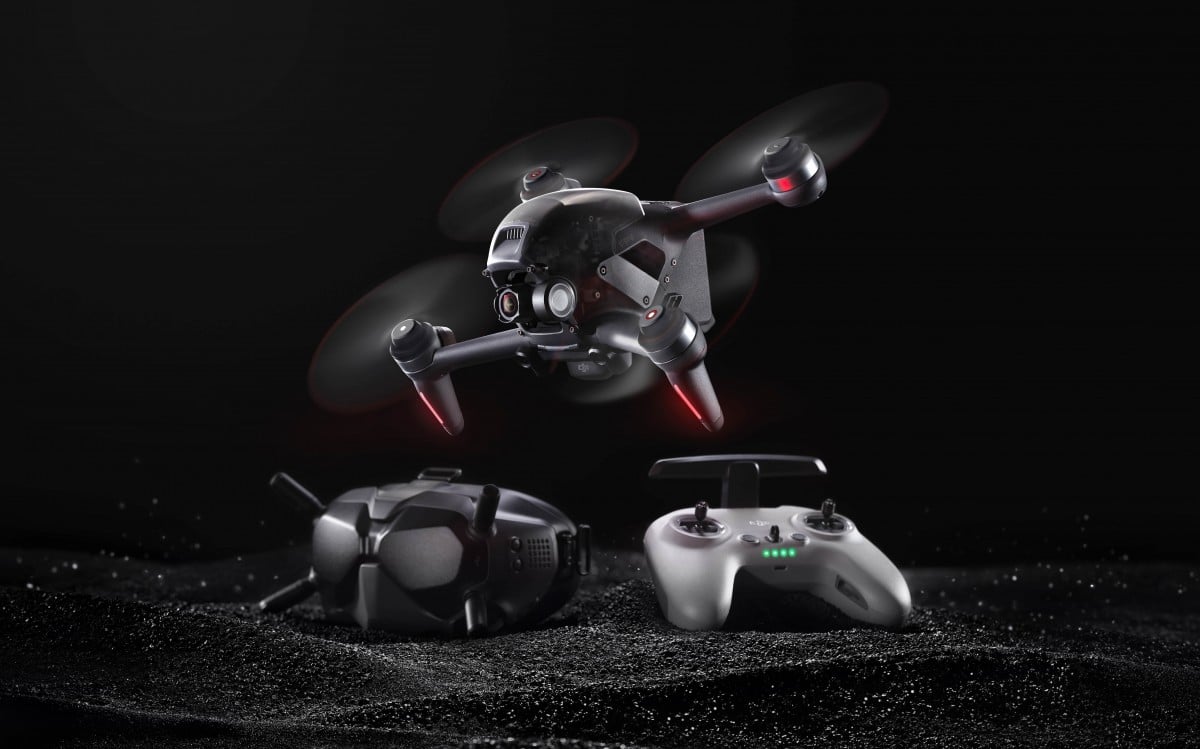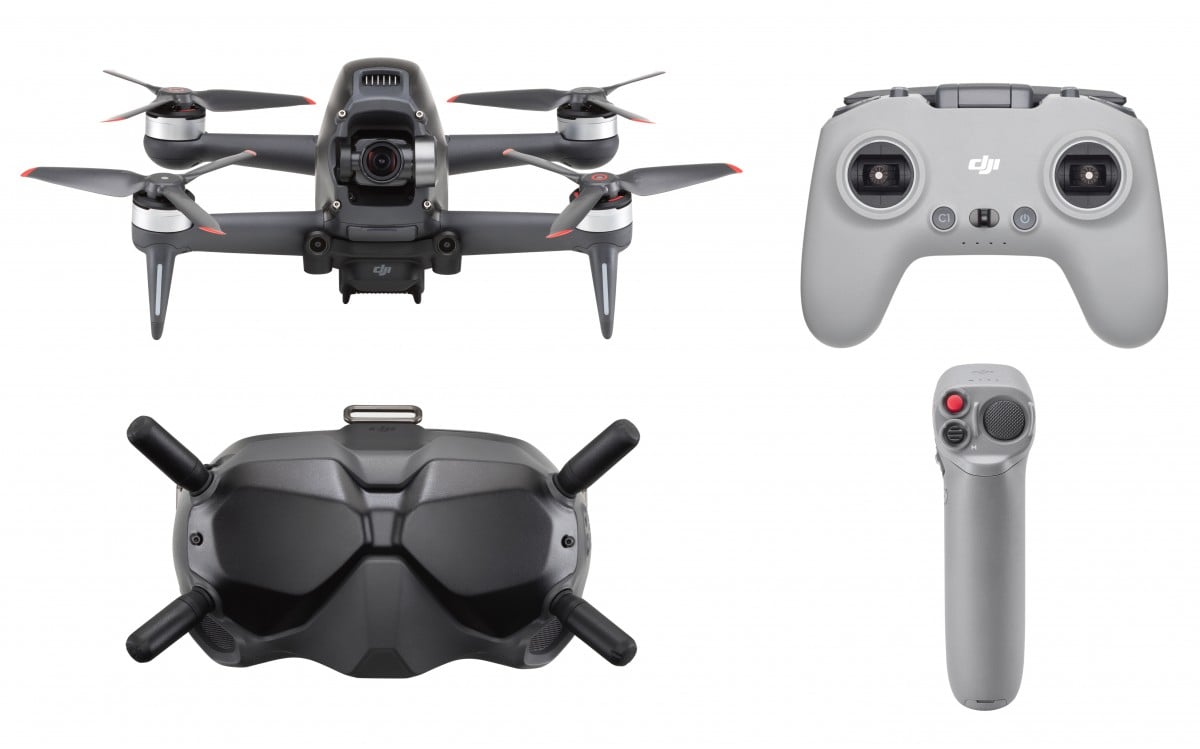DJI‘s upcoming FPV drone has been the subject of several leaks which reveal a great deal about the device before launch. We won’t have to wait for more leaks as the FPV has been launched. It is a hybrid drone that merges the first-person feature of FPV drones as well as the speed and agility of racing drones with a simplistic usage as well as integrated camera feature that consumer drones are known for.
DJI FPV is propelled by high-performance motors that make it capable of hitting 100 km/h in just 2 seconds. The drone also comes with a peak speed of 140km/h. The drone also comes with three flight modes; Normal mode, Manual mode, and Sport mode.
The Normal mode is designed for novice pilots, activating features such as obstacle detection and allowing the drone to hover in place. On the other hand, the Manual mode disables all assistance and gives the user full control over the flight. Finally, the Sports mode combines some of the features of the Normal mode while retaining the manual control availed in the Manual mode.
Furthermore, the DJI FPV comes with an Emergency Brake and Hover feature which can be deployed at any time with the press of a button regardless of the mode in use. The drone also retains the “Return to Home” feature that is used to land the drone at the point it took of from. There is also an ADB-S receiver onboard which alerts pilots of any aircrafts or helicopters in the vicinity.
One major feature onboard the DJI FPV which stands it out is the DJI FPV Goggles V2. The pilot is said to be capable of viewing footage from up to 10km using the goggles. The drone also comes with several technologies such as auto-switching dual frequencies, 50Mbps bitrate, and anti-interference. Two viewing modes will be available to pilots; a standard low-latency HD mode and a Smooth mode. The standard low-latency HD mode displays in a resolution of 1440x810p at 60fps with 142° FoV or 50fps with 150° FoV. The latency in this mode is less than 40ms.
On the other hand, the Smooth mode utilizes either 120fps with 142° FoV or 100fps with 150° FoV with less than 28ms latency but shares the same resolution as the standard mode. In addition to the main Goggle, users can add up to eight other goggles giving others the pilot’s view.
As for the camera, the DJI FPV comes with a 4K/60p 120Mbps camera that is mounted on a gimbal. The camera is capable of recording 4X slow motion in 1080/120p while videos can be saved in H.264 or HEVC. Apart from the stability offered by the gimbal, there is also DJI’s RockSteady digital image stabilization equipped on the camera.
As for the price, the DI FPV carries a price tag of $1299 inclusive of the remote controller 2 as well as the FPV Goggles V2, cables, and one battery. DJI will sell a standalone motion controller separately. It allows the pilot to control the drone with movements of the hand. The motion controller will sell for $199. There is also the DJI FPV Fly More Kit which bundles two extra batteries and a charging hub for just $299.
RELATED;







